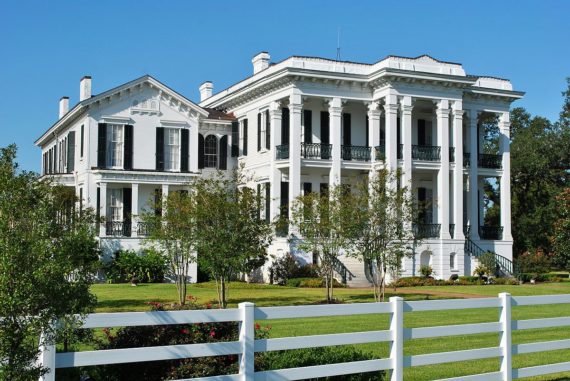
“The history of each Southern plantation is a living heritage,” says Ted Alexander, regional director of Preservation North Carolina, one of the South’s leading non-profit organizations dedicated to promoting the preservation and restoration of historic homes. “While common themes and stories are interwoven through the history of plantations from the middle Atlantic states through the deep South, each one has its own personality and its own unique character. No other region of the United States can claim such cultural diversity and architectural splendor as the South. For every plantation house, or in-town planter residence that is restored a little more our collective history is preserved for future generations. And that is something that we should all treasure.”
In the film version of Margaret Mitchell’s Gone With the Wind, after Atlanta has been burned and Scarlett O’Hara is fleeing to Tara, there is a scene where she arrives at neighboring Twelve Oaks Plantation to find it burned by Yankee troops and in ruins. The mansion’s once-grand double staircase is open to the night sky, and a cow appears wandering around in a space that had been a formal hall.
Afraid that she will find the same destruction when she arrives at home, Scarlett is overjoyed when rolling clouds part and moonlight falls on Tara’s facade revealing that it has survived, albeit in shambles. In real life, a similar moonlight experience revealed that one of the South’s most important historic homes was in great distress and in need of saving.
While sailing down the Potomac River on a moonlit night in 1853, South Carolinian Louisa Byrd Cunningham caught a glimpse of George Washington’s beloved Mount Vernon in a great state of disrepair. The mansion’s impressive portico was sagging and missing two of its columns. A number of its shutters had rotted away or were hanging from broken hinges, and weeds and bramble covered the lawn.
More @ The Abbeville Institute







